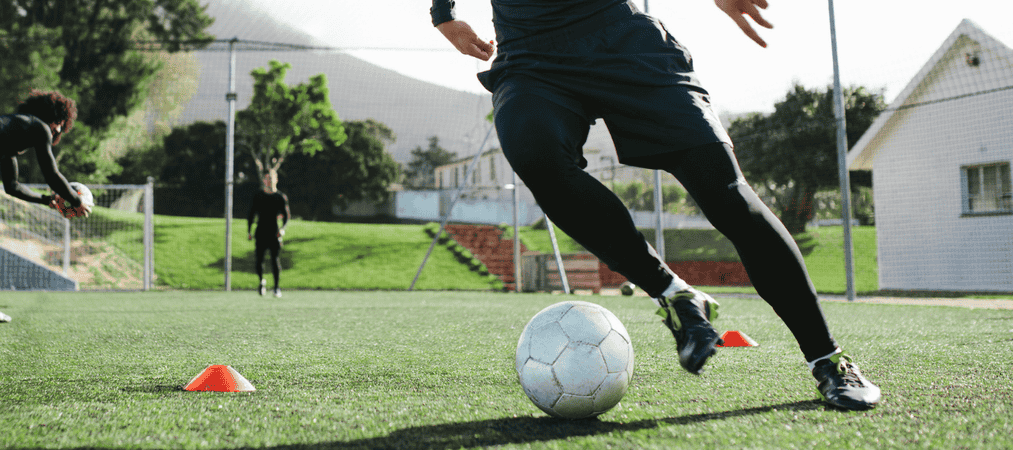

Any time an athlete has to slam on the brakes and then re-accelerate their body in a new direction, they’re showing their change of direction ability. And we know from research that athletes who can change direction quickly and efficiently tend to stand out in sports like football, basketball, lacrosse, and soccer.
Now, think about soccer. Players make somewhere between 1,000 and 1,500 movement changes in a single game. If you don’t have strong change of direction skills in that environment, you’re going to struggle. That’s why it’s so important that athletes train in ways that replicate the actual demands of their sport.
A lot of things play a role, but if I had to put one at the top of the list, it’s eccentric strength. Eccentric strength is what helps an athlete ‘hit the brakes.’ And the faster you can brake, the quicker you can push off and accelerate again. That’s why change of direction training really benefits from eccentric overload exercises.
When athletes sprint, jump, or cut, the hamstrings are rapidly lengthening under load, that’s the eccentric phase, and then immediately shortening again, which is concentric. This is what we call the stretch–shortening cycle. Training that stresses this stretch–shortening cycle helps athletes store and release elastic energy more effectively, develop stronger tendons, and improve neuromuscular control. The end result is faster, more explosive performance.
Flywheel training forces the nervous system to handle aggressive velocities, like when you’re controlling the descent of a flywheel squat. It teaches the body to absorb and re-apply force quickly, which is exactly what athletes need in sport. Sure, traditional lifts like squats and deadlifts are great for building general strength, but they don’t quite replicate the power demands of sport the way the flywheel does. In fact, research has shown that flywheel resistance training improves change of direction performance better than traditional resistance training because it matches the speed and force demands athletes face in competition.
Options for achieving eccentric overload with FRT devices include:
Get the latest research, case studies, blogs, and exclusive offers direct to your inbox!
By clicking Sign Up, you agree to our Privacy Policy and Terms and Conditions.